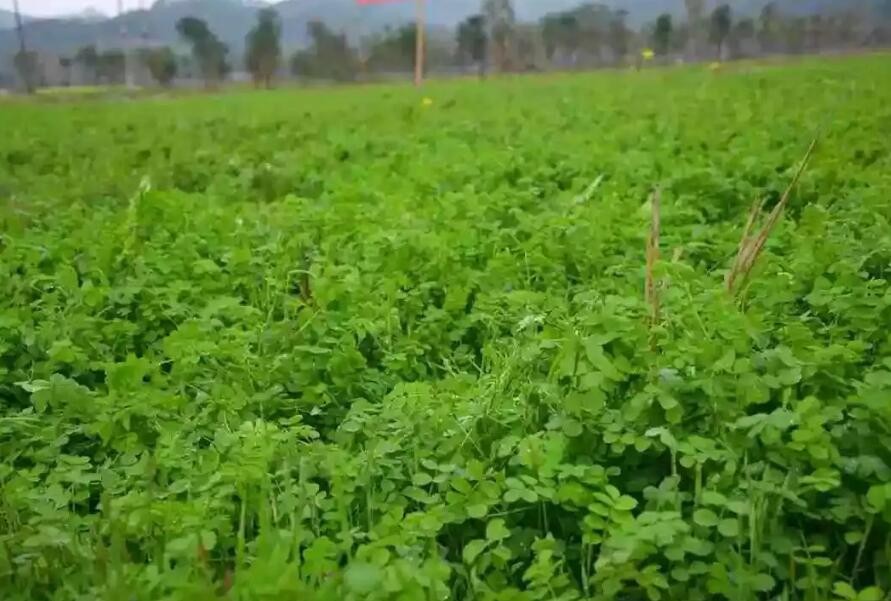Water-soluble fertilizer refers to fertilizers containing nitrogen, phosphorus, potassium, calcium, magnesium, trace elements, amino acids, humic acid, alginic acid, etc. that can be completely dissolved in water. The roots and leaves are directly absorbed and utilized.
The use of water-soluble fertilizers is very particular. In order to achieve better results, it is necessary to combine the characteristics of water-soluble fertilizers and master certain fertilization skills:
Second dilution, dissolve thoroughly
The second dilution method should be adopted, and the mixture should be fully stirred in time. Good quality water-soluble fertilizers have a high content of ingredients. During the dissolution process, when the amount of water is insufficient, it is easy to cause saturation of the aqueous solution and crystallize to the bottom.
According to normal experience, adding water within 30 times, the aqueous solution is easier to be saturated, of course, this is also related to the internal quality of the product. Some people often think that it is a product problem. In fact, as long as we dissolve it separately, or pour a large bucket with water, and dilute it according to the prescribed multiples, it can be dissolved quickly.
Avoid dry burial and spread evenly
Water-soluble fertilizers are different from general compound fertilizers. We cannot follow conventional fertilization methods, and direct burial is not recommended. The price of water-soluble fertilizers is relatively high, and the cost is unbearable. In addition, burial will easily cause uneven fertilization and burn seedlings and damage roots.
Therefore, it is better to dilute it with water, spray the roots evenly or spray it, so that the fertilizer is evenly distributed in the soil, and the roots can be absorbed in all directions, which improves the utilization rate.
Strictly control the dosage to avoid loss
Water-soluble fertilizers have higher nutrient content than general compound fertilizers, and the dosage is relatively small.
It is difficult to remain in the soil for a long time, so the amount of fertilizer should be strictly controlled to avoid fertilizer loss and fail to achieve the purpose of high yield.
Safe mix and match
Compared with pesticides, water-soluble fertilizers have better compatibility and can be used together without special ingredients or product instructions.
However, be careful not to mix with alkaline pesticides, so as to avoid the reaction of metal ions to cause precipitation, resulting in leaf fertilizer damage or phytotoxicity.
Tips for using water-soluble fertilizer:
1. Completely water-soluble fertilizers are usually only used as top dressing. During the application process, it is necessary to pay attention to the combination of base fertilizer and top dressing, water-soluble fertilizer and conventional fertilizer, inorganic fertilizer and organic fertilizer, and choose the appropriate formula according to the growth state of different crops and the properties of soil.
2. Use a small amount several times. Generally, when applying fertilizers, the principle of frequent application of small amounts of fertilizers and frequent application of thin fertilizers should be followed, which can avoid the waste of water and fertilizer caused by one-time large-scale application of fertilizers.
3. Pay attention to water before use. Before using water-soluble fertilizers, it is necessary to understand the hardness and pH of irrigation water to avoid precipitation and reduce the fertilizer efficiency of the product.
4, to avoid the phenomenon of obesity. When fertilizing with drip irrigation, water should be dripped first, and the fertilization should be carried out after the water in the pipe is full. The longer the application time, the better. Immediately after fertilization, dripping water for about half an hour will help to drain the residual fertilizer in the pipeline.
5. Nutrients should be evenly distributed. Especially in the case of drip irrigation, the growth of the root system is relatively dense, and there is a higher requirement for a reasonable proportion of nutrients.
6. Avoid excessive irrigation. The general soil depth is 20-40 cm to keep it moist.
